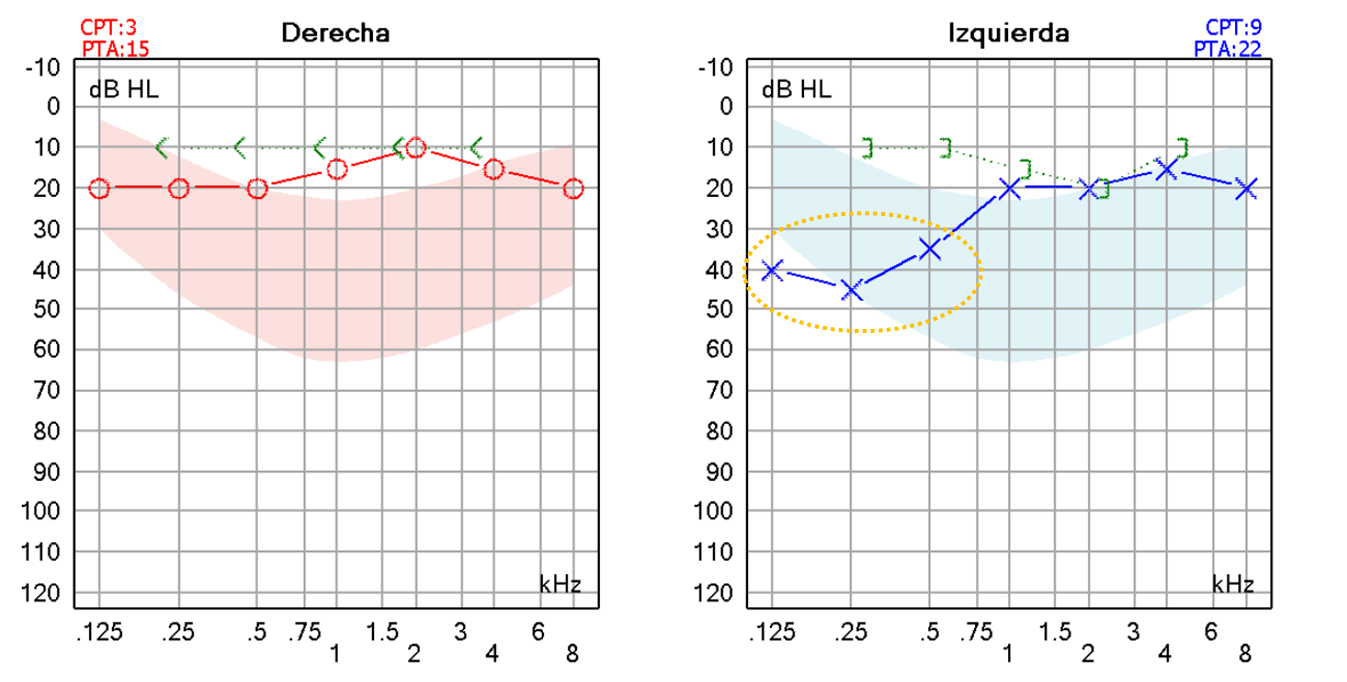Osteogenesis imperfecta
2. Hearing assessment
When there is a loss of normal hearing (hypoacusis), a series of anomalies may appear such as difficulty in understanding words or parts of words, the need to ask the interlocutor to repeat sentences, difficulty in understanding on the telephone, excessive volume on the television or radio, the sensation of a noisy environment, delayed language acquisition in children... Some people may also perceive a sensation of pressure in the ear or the presence of ringing or buzzing in the ears (tinnitus).
In order to correctly assess how we hear or in which part of the ear the hearing deficit originates, different tests are available:
Subjective tests
- Tone audiometry: this consists of the emission of sounds at different frequencies (to which the patient must respond if he/she is able to hear them), and allows us to study the auditory threshold, i.e. the minimum audible intensity for each frequency. The results are recorded on a graph called an audiogram (Figure 2). This is a graph showing a person's hearing thresholds in relation to average normal hearing. The thresholds are expressed in decibels (dB) and for each of the frequencies, which are expressed in Hertz (Hz).
Audiometry can be assessed via air conduction (usually with headphones that emit the different sounds) or via bone conduction (by means of vibrations applied at the mastoid, the bone behind the ear).

- Verbal audiometry: this test is performed to assess the ability to understand language. To do this, the patient must repeat standard lists of words that he/she will hear at different intensities.
Objective tests
- Impedance testing: this is a set of tests that assess the functioning of the inner ear. An auditory stimulus is emitted with a probe placed in the external auditory canal, and information about the integrity and mobility of the eardrum and the chain of ossicles of the ear is collected in the form of graphs using a sensor.
- Auditory evoked potentials: this is a scan in which the electrical activity of the auditory nerve is measured when the ear is stimulated with a sound. When the cochlea is stimulated with a sound, the sound is transformed into an electrical stimulus that travels through the auditory nerve to the brain. Through electrodes (similar to how an electroencephalogram is performed), this electrical current is recorded and transformed into a series of waves that will give us information about the auditory threshold and sound conduction. It is a method that can be used in young children or people who are unable to cooperate in audiometry, although due to its limitation to certain frequencies, it must often be complemented with other audiological tests.
- Otoacoustic otoemissions: these are sounds produced by cells within the cochlea in response to an acoustic stimulus. The test consists of placing an earpiece in the external auditory canal that records these otoemissions. It is a simple test, which does not require the patient's cooperation.
Finally, radiological tests such as magnetic resonance imaging (MRI) or computed tomography of the ear (CT) can be useful to anatomically evaluate the different components of the ear.